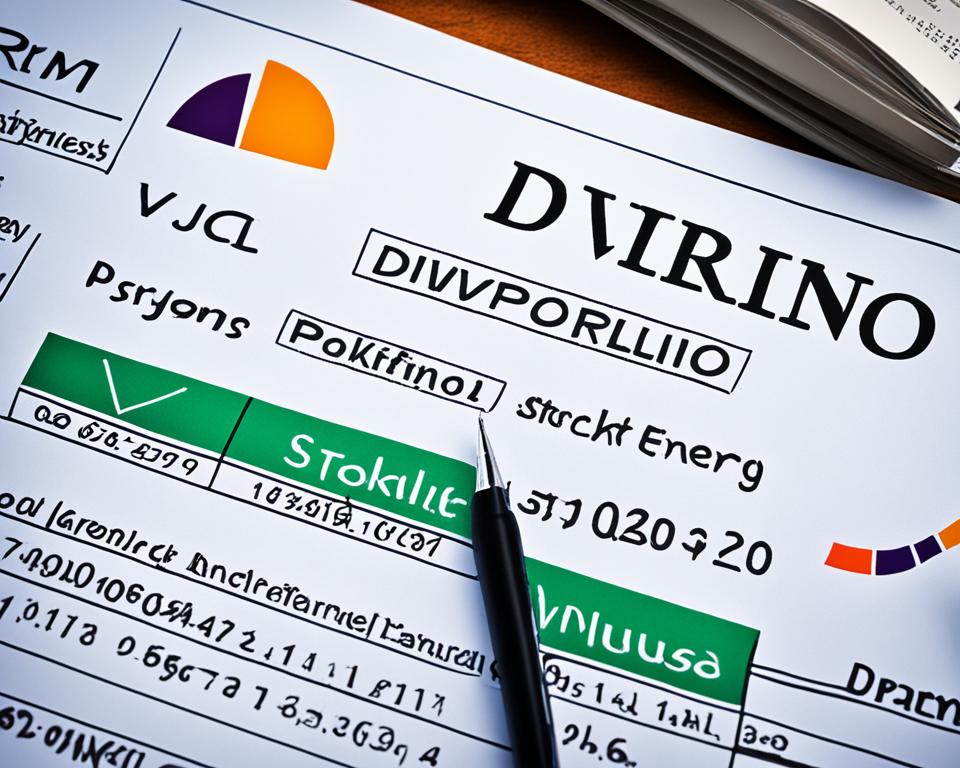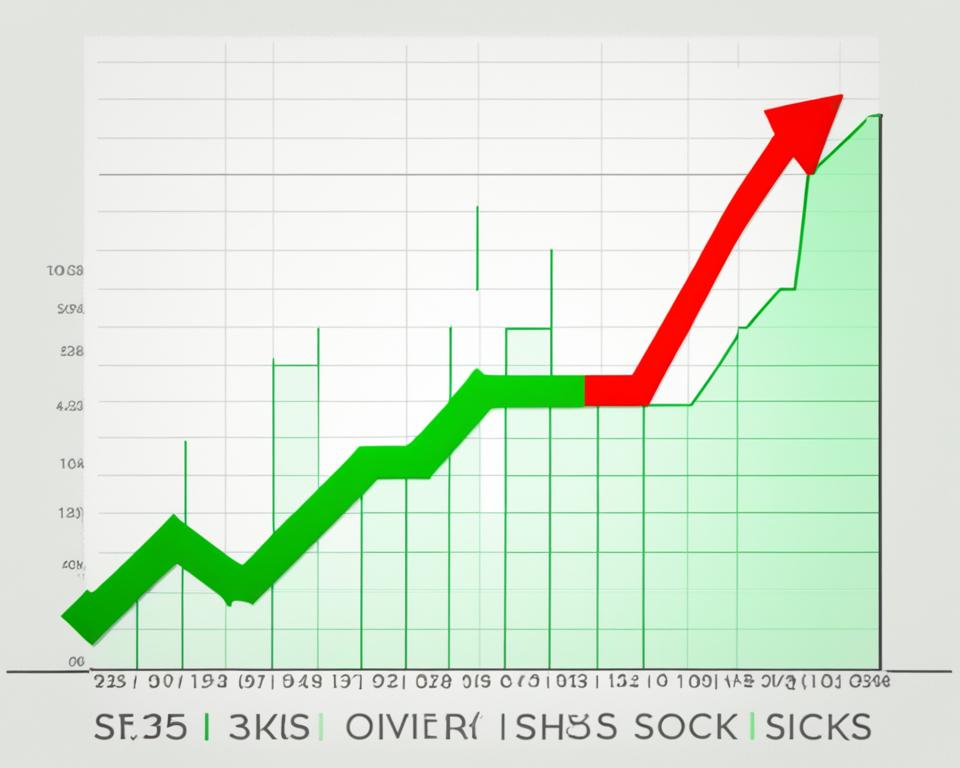We live in a world where savvy financial strategies can lead to rewarding outcomes. Among the plethora of wealth-building mechanisms, we recognize how dividend stocks work as a cornerstone of smart investing. These vehicles offer the allure of generating a steady stream of passive income, serving as a testament to the wonders of portfolio diversification. For the uninitiated, the concept is straightforward: companies distribute a portion of their profits to shareholders, embedding a sense of partnership and shared success.
Typically disbursed on a quarterly basis, dividends can appear in the form of cash payments or reinvestment opportunities in additional stock. This sequence embodies the financial health and operational success of a company, as decided by its board of directors. Not all entities ply this path—some prefer to channel earnings back into their enterprises, aiming for growth and expansion. Yet for us as investors, dividends represent a gleaming beacon for passive income strategies, contributing to the depth and breadth of our investment portfolios.
Despite some economists contending that dividend policies might not sway the value or cost of capital in a firm, dividends continue to captivate. They represent more than a mere financial transfer; they’re a strategic framework engaging loyal investors with the promise of shared corporate earnings. Striding into the realm of dividends allows us to partake in a company’s success, underpinning our investment journey with potential profits and long-term gains.
Key Takeaways
- Dividends denote a share of a company’s earnings, paid to investors as part of passive income strategies.
- Dividend stocks can contribute to portfolio diversification and overall growth.
- Shareholders must own the stock before the ex-dividend date to be eligible for the payout.
- The dividend policy of a firm is dictated by its board of directors, reflecting corporate profitability and strategic financial planning.
- Though not all companies issue dividends, those that do offer an attractive incentive for smart investing.
What Are Dividends and Why They Matter
As we navigate the rich tapestry of investment opportunities, understanding the role of dividends in the financial market is paramount. Dividends are essentially a slice of a company’s profits given back to its shareholders, a tangible reward for their investment. Beyond being simply a perk, dividends underpin the shareholder value in the corporate world. Let’s delve into the foundational elements of dividends and discern their significance in enhancing shareholder wealth.
Defining Dividend Stocks
Dividend investing basics dictate that dividend stocks are specific shares of companies that pride themselves on distributing a portion of their earnings back to investors. These periodic payments contribute meaningfully to shareholder value, serving not only as a reward for investor loyalty but also as an indicator of corporate financial health. When a company consistently shares its profits, it is often interpreted as a robust sign of its steady earnings and thoughtful leadership.
The Role of Dividends in Stock Investment
A closer look at how dividends work reveals their dual role. For companies, dividends are a liability recorded on the balance sheets, subtracting from the corporate earnings that could be reinvested. For shareholders, however, dividends are a valued asset, providing benefits such as potential income and serving as a beacon signaling a business’s foundational stability. These strategic distributions often reflect a company’s commitment to generating and sharing its financial success with those who back it up.
Dividends vs. Growth: Understanding the Difference
When weighing dividends vs growth stocks, it’s essential to recognize a fundamental difference. Growth stocks typically reinvest all spare profits into the company, aiming for expansion, innovation, and increased market share. In contrast, dividend stocks favor sharing a portion of these profits with shareholders. This distinction is pivotal in deciding our investment route – do we prioritize potential income through dividends or potentially higher gains through reinvested earnings fostering growth? Our choice should align with our long-term financial strategies and investment goals.
As we wrap our heads around the dividends investing basics, it is crucial to appreciate that while dividends can offer a supplementary income stream and contribute to shareholder value, not all enterprises opt for this path. For instance, burgeoning tech and biotech firms might eschew dividends to fuel aggressive growth through reinvestment. Each approach has its merits and caters to different investor objectives and risk appetites, illustrating the diverse strategies within the equity market.
The dividends landscape is vast, impacting our portfolios with every ripple of corporate earnings declaration. As we continue our investment journey, it’s paramount that we understand the dynamics at play: how dividends can illuminate the path to wealth and why they hold a revered spot in the pantheon of shareholder value enhancers.
How Dividend Stocks Work
Delving into the world of top dividend stocks, we focus on the intricacies of how dividends serve as a bridge between a company’s profits and shareholder rewards. The dividend payout ratio, dividend yield calculation, and shareholder eligibility are key concepts in comprehending the universe of dividend stocks.
The Process of Dividend Distribution
Dividends are the financial rewards paid to shareholders, and they follow a specified distribution timeline crucial for investors to understand. Firstly, a company announces its dividend, thereby providing details about the amount and when it will be available. Subsequently, the ex-dividend date marks the calendar as the date by which an investor must own the stock to be eligible for the declared dividend.
“The ritual of dividend distribution is a meticulous process, honed by corporate governance to maintain financial discipline and reward loyalty among stakeholders.”
The company then records the investors eligible for the dividend on the record date, followed by the actual dispersal of funds on the payment date. It’s our responsibility as investors to be cognizant of these dates to ensure we position ourselves correctly to receive dividends.
Understanding Dividend Yields
At the heart of dividend investing lies the dividend yield – a crucial metric that gauges the amount of cash flow you’re receiving for each dollar invested in a dividend-paying stock. The calculation is fairly straightforward:
Dividend Yield = Annual Dividends per Share / Price per Share. This figure, expressed as a percentage, allows us to compare the annual dividends of different companies irrespective of their stock price.
Eligibility and Importance of Ex-Dividend Dates
Eligibility for dividends is not eternally open; it’s determined based on ownership of the stock before the ex-dividend date. To receive dividends, one must purchase the shares before the ex-dividend date, which is typically set one business day before the record date.
| Company | Quarterly Dividend | Ex-Dividend Date | Record Date | Payment Date |
|---|---|---|---|---|
| Johnson & Johnson | $1.01 | Feb 22, 2023 | Feb 23, 2023 | Mar 08, 2023 |
| Exxon Mobil | $0.87 | Feb 10, 2023 | Feb 13, 2023 | Mar 10, 2023 |
| Walmart Inc. | $0.55 | Mar 17, 2023 | Mar 20, 2023 | Apr 03, 2023 |
Understanding these dates is paramount for us to effectively manage our investment portfolio and ensure we meet the criteria to benefit from a company’s dividend distributions.
Types of Dividends and What They Signal
As we explore the vast expanse of investment opportunities, dividends stand out as a key reward mechanism for shareholders. Understanding the types of dividends is crucially significant, as their nature can signal the prosperity and strategic choices of a company. Dividends are predominantly issued as either stock dividends, cash dividends, special dividends, or through Dividend Reinvestment Programs (DRIPs).
Cash Dividends are perhaps the most direct and common form of shareholder remuneration. When a company announces cash dividends, they’re deposited straight into our brokerage accounts, gleaming as clear indicators of the company’s positive cash flow characteristics.
Alternatively, Stock Dividends offer us additional shares of the issuing company. This route may not initially boost our liquidity, but it does represent a vote of confidence in the company’s growth potential, reflecting a reinvestment of profits designed to spur shareholder per-share value over time.
“Stock dividends signal a company’s buoyancy and long-term faith in its expansion.”
On special occasions, a company may announce Special Dividends, which are one-off distributions usually prompted by an extraordinary financial event – an asset sale, for example, or staggering profit margins. These are positive harbingers, often taken as robust signs of a company’s financial flexibility and corporate largesse.
Then there are our investments coupled with DRIPs, empowering us with the choice to automatically reinvest the cash dividends we receive into purchasing more shares, frequently at a discounted price – a fortuitous compounding opportunity to increment our stake without dipping into our pockets.
Aligning with our diversified investment philosophy are Dividend Mutual Funds and ETFs. They hold a basket of dividend-yielding stocks, offering us the benefit of dividends alongside the advantages of a reduced risk profile inherent in pooled investment vehicles.
We also encounter the prospect of Preferred Dividends, often doled out to owners of preferred stock. More akin to bond payments, these dividends present themselves with typically fixed and sometimes higher payouts, aligning with the preferential status attributed to this class of stock.
- Cash Dividends: Reflecting positive cash flow and immediate shareholder reward.
- Stock Dividends: Indicative of company growth plans, offering reinvestment of profits.
- Special Dividends: One-time telltales of exceptional corporate fiscal performance.
- DRIPs: Allowing shareholders to compound their investment at potentially favorable rates.
- Preferred Dividends: Guaranteeing a fixed return, often with a preferential edge.
Each dividend variety whispers something distinct about the company issuing it, forming a complex language of corporate confidence, financial wellness, and strategic planning that we, as astute investors, have learnt to interpret.
With this comprehensive view of the dividend landscape, we possess the insights necessary to navigate the diverse terrain of investment opportunities. Together, let us continue to decode the signals emitted by dividend policies and harness them for our financial empowerment.
How Companies Decide on Dividend Payouts
When it comes to determining the sharing of profits with their shareholders, companies must exercise sound corporate governance and strategic fiscal management. The deliberation on dividend payouts is a complex, yet pivotal aspect of a corporation’s financial life-cycle, one that signals to investors the company’s operational soundness and long-term sustainability.
The Power of the Board of Directors in Dividend Decisions
At the helm of this decision-making process is the board of directors. Their role extends far beyond just rubber-stamping payments—these stewards of corporate governance weigh the pros and cons of distributing profits back to shareholders against the potential yield from reinvesting them back into the company. It’s a balance between fulfilling shareholders’ expectations and fostering the company’s growth and capital requirements for future projects.
Dividend Payout Ratio Explained
Integral to the board’s deliberation is the dividend payout ratio—a metric that reveals the percentage of earnings allocated to paying dividends. It’s a flashlight illuminating the company’s policy on shareholder remuneration, signaling financial stability or, conversely, a potential red flag if the ratio is disproportionately high, indicating less retention for growth opportunities.
- Dividend Payout Ratio = Annual Dividends per Share / Earnings per Share
Special Dividends and Their Significance
Special dividend announcements, on the other hand, often tell a story of extraordinary circumstances. Whether due to an exceptional profit period or a strategic fiscal decision, these non-recurring payments can excite the market, revealing a bounty of accrued profits ready to be shared. These dividends can significantly enhance investor returns and often reflect a company’s robust liquidity and favorable prospects.
Below, we unveil a snapshot of the annual dividend policies from select industry stalwarts—each with its approach to rewarding shareholders while maintaining healthy financial reserves for future growth and stability.
| Company | Annual Dividend per Share | Dividend Payout Ratio | Notes on Special Dividends |
|---|---|---|---|
| Unilever | $1.64 | 65% | No special dividends announced recently. |
| Walmart Inc. | $2.20 | 45% | Known for consistent quarterly dividends rather than special payouts. |
| Johnson & Johnson | $4.04 | 57% | Special dividends are rare; focuses on steady annual increases. |
| Exxon Mobil | $3.48 | 75% | Occasionally declares special dividends in highly profitable years. |
We can discern from the provided data the variance in policies—from Walmart’s consistent approach to Exxon’s readiness to declare special dividends. Understandably, the interplay between regular and special dividends, guided by the hands of the board of directors, remains a dynamic narrative within corporate governance narratives.
Evaluating Top Dividend Stocks for Your Portfolio
When we set out to refine our investment portfolio, it’s the blend of financial acumen and judicious selection that leads us to dividends. In the realm of stocks, dividends are not just profits shared; they are indicators of a company’s enduring commitment to its shareholders. To evaluate the best dividend stocks, we must consider several crucial factors: dividend yield, the consistency of payouts, and overall financial performance. Moreover, focusing on Dividend Aristocrats and the diversity of industry sectors can bring forth a bouquet of promising investment opportunities.
Assessing Dividend Yield and Payout Consistency
Poring over financial statements and market trends, we discern that the dividend yield serves as a compass directing us towards the stocks which potentially offer a better return on our investment. A rewarding dividend yield, coupled with a steady track record of consistent payouts, speaks volumes about a company’s ability to manage cash flow effectively. It reassures us that the company is not just performing well presently, but it also has the foresight to sustain this performance long-term. This perspective is vital in our quest for financial growth that stands the test of market fluctuations.
Identifying Dividend Aristocrats
The term ‘Dividend Aristocrat’ echoes with prestige in the investment community. These are the paragons of dividend consistency, recognized for raising their dividends annually for at least 25 years. Such an accomplishment is no trivial feat; it demands an exhibition of financial resilience and adaptability through economic cycles. For us, incorporating Dividend Aristocrats into our portfolio symbolizes a move towards reliability and a hallmark of quality that could stabilize our investment returns regardless of market uncertainties.
Benefits of Dividend Stocks in Diverse Sectors
Diversification is one of the bedrock principles of investing as it minimizes risk. Delving into dividend stocks across various industry sectors enables us to tap into different economic engines. From the essential services provided by utilities to the innovation-driven healthcare sector, each brings a unique set of advantages and responds differently to economic events. The cornucopia of choices ensures we have a chance to balance our portfolio to weather inflationary periods, interest rate adjustments, and other elements that might affect our dividend income.
| Industry Sector | Example Dividend Aristocrat | Average Dividend Yield | Years of Consecutive Dividend Increases |
|---|---|---|---|
| Consumer Goods | Procter & Gamble | 2.6% | 63 |
| Healthcare | Johnson & Johnson | 2.5% | 58 |
| Utilities | Consolidated Edison | 3.7% | 45 |
| Financials | T. Rowe Price | 2.4% | 34 |
In our collective pursuit of financial wisdom, we tend to take guidance from the past performance and present reality of investments to navigate towards a promising future. By harnessing the statistical power of dividend yield, aligning with the consistent growth rate of Dividend Aristocrats, and spreading investments across stable industry sectors, we could potentially unfold a chapter of lasting prosperity in our investment chronicles.
Dividends as a Source of Passive Income
As we chart our course towards financial security, smart investing principles highlight the significant role of passive income from dividends in our portfolios. These regular payouts serve as a testament to a company’s sound financial management and stand as a beacon for investors in search of a regular income stream. Engaging in dividend investing aligns with the pursuit of steady, dependable returns that, over time, can form the bedrock of wealth accumulation.
Strategic allocation of dividend-paying stocks within an investment portfolio amplifies the prospects of not just receiving income, but fostering an income stream that has the potential to increase. The sound financials of a company paying consistent dividends instill confidence among shareholders and underscore its commitment to delivering shareholder value.
Yet, it’s important to bear in mind that dividend income doesn’t sidestep Uncle Sam — it is taxable. Thus, our investment strategies must account for the tax implications to ensure that returns remain optimized. This necessitates a clear-eyed assessment of tax considerations against the backdrop of our overall financial plan.
Dividends are the fruits borne from a well-planted investment garden, providing nourishment in the form of income and financial growth opportunities.
Within this context, we can’t overlook the allure and pragmatic benefit of introducing such dividend-yielding stocks into our long-term investment strategy. They don’t merely stand as static components of our portfolio; they are dynamic contributors to our aim for monetary resilience and independence. Social security and savings, while foundational, are complemented by the proactive pursuit of dividends — a strategy that converts wise investment decisions into an enduring source of income.
| Company | Annual Dividend Yield | Consecutive Years of Dividend Growth | Dividend Payout Ratio |
|---|---|---|---|
| Procter & Gamble | 2.6% | 63 | 60% |
| Johnson & Johnson | 2.5% | 58 | 70% |
| Consolidated Edison | 3.7% | 45 | 65% |
| T. Rowe Price | 2.4% | 34 | 50% |
In turning our gaze towards passive income from dividends, we galvanize our portfolios and invest not just in stocks, but in the veritable and tangible commitment of companies to prosper alongside their shareholders. It’s a journey we undertake with a clear understanding of the potential benefits, the associated fiscal responsibilities, and the sheer, calculated thrill of smart investing.
Tax Implications for Dividend Investors
Investing in dividend-paying stocks is a tried-and-true strategy to build wealth, but it comes with the need to navigate the complexities of taxation. It’s no secret among us that dividends can serve as a solid stream of investment income, yet understanding the tax implications associated with these dividends is essential for maintaining the efficiency and profitability of our investments.
Understanding Qualified versus Non-Qualified Dividends
The distinction between qualified dividends and non-qualified dividends is more than a mere tax technicality; it is a pivotal aspect of our investment strategies. Qualified dividends benefit from being taxed at the lower capital gains tax rates—provided we have held the stock for a minimum of 60 days before the ex-dividend date. These favorable rates range from 0%, 15%, to a maximum of 20%, depending on our tax bracket. By contrast, non-qualified dividends are taxed at our regular income tax rates, which can climb as high as 37%. Hence, scrutinizing our dividend’s qualification status is indispensable in forecasting the net returns on our investments.
How Dividend Income is Taxed in the United States
As we tread the terrain of dividend investing, acquainting ourselves with the tax structure of the United States is crucial. In essence, the IRS treats dividends as taxable income. This income can be taxed at various rates, hinging upon whether dividends meet the criteria to be classified as qualified. Our lasting strategy involves a keen awareness of the specific taxation rates applicable to the dividends we receive, ensuring we are prepared when tax season arrives and can secure our investment returns post-taxation.
Effective Tax Planning for Dividend Earnings
To fully benefit from our dividends, incisive tax planning is a keystone. We must consider the implications of our overall income, evaluate the proportion of investment income that comes from dividends, and position our portfolios to take advantage of the available tax benefits. The strategic move might include timing the sale of investments to coincide with our tax plans or balancing the mix between high-yield and growth stocks to optimize after-tax income. Savvy planning permits us to enhance the real value of our investment income and sustain the long-term growth of our portfolios.
As we journey together in the realm of investment, let’s pledge to not only seek dividends as a source of income but to also arm ourselves with the wisdom of tax implications. After all, it’s not just the returns that count, but the returns we keep after taxes.
Comparing Dividend Payout Timelines: Monthly, Quarterly, Annually
As we navigate the investment landscape, understanding dividend payout timelines is integral to our portfolio management strategies. Each company adheres to its financial calendar, which determines the frequency of their dividend distributions, ranging from monthly, quarterly, to annual dividends. The selection of the payout timeline can be reflective of the company’s financial strategy and operational priorities, making it essential for us to align our investment choices accordingly.
While quarterly dividends are commonly seen as the norm, providing a balance between regular income and financial planning flexibility, monthly dividends offer a more frequent income stream, often appreciated by those relying on investments for regular expenses. Annual distributions, on the other hand, may indicate a different strategic approach, perhaps denoting a company’s intent to reassess its earnings more comprehensively before sharing them with shareholders.
Yet, the dividend landscape does not end here. Some companies, buoyed by particularly strong financial performances or extraordinary events, issue special dividends. These one-off payouts, though not guaranteed every cycle, can significantly bolster a shareholder’s earnings when they do occur.
Below, we have charted out a comparison of different companies’ dividend payout timelines, offering us a panoramic view of the cadence in which these companies choose to reward their investors:
| Company | Dividend Frequency | Recent Quarterly Dividend | Recent Annual Dividend | Upcoming Special Dividend |
|---|---|---|---|---|
| Consolidated Edison | Quarterly | $0.77 | $3.08 | N/A |
| T. Rowe Price | Quarterly | $1.08 | $4.32 | N/A |
| Realty Income | Monthly | $0.2365 | $2.838 | N/A |
| Target Corporation | Quarterly | $0.90 | $3.60 | $0.68 (Issued Dec 2022) |
Through this comparative lens, we not only grasp the payment frequencies but also the varied approaches companies take towards dividend distributions. As investors, it becomes clear that whether we seek regular income through monthly payouts or appreciate the annual windfalls, there’s a spectrum of choices that accommodate different investment preferences.
As we consider our next moves, let us reflect on our income needs and financial goals. A thorough understanding of dividend payout timelines could be the linchpin in curating a robust investment portfolio that resonates with our fiscal aspirations. With this insightful analysis, let’s confidently stride forward in our journey of smart investing.
The Connection Between Dividend Policies and Company Performance
As we explore the dynamic landscape of financial markets, discerning how dividend policy reflects upon a company’s performance becomes increasingly relevant. Shifts in these policies can send signals through the investing community, offering valuable insights into the financial health and strategic direction of a corporation. Understanding these signals allows us as investors to better align our portfolios with our financial objectives.
Interpreting What Dividend Changes Say About a Company
When a company announces changes to its dividend payments, it’s essentially speaking in the language of profitability and stability. An increase in dividends is typically perceived as a sign of healthy company performance and a stable cash flow—a clear indicator that a company is not only making profitable operations but is also confident in its financial future. On the flip side, when dividends are cut, it triggers a caution among investors, and could point to tighter cash flows or even challenges in the company’s earnings. Hence, we keep a close watch on these changes to yield investing insights.
How Dividends Can Reflect Company Stability and Growth
For companies with a track record of consistent and rising dividends, investors can infer that they are not just managing operations effectively, but are also yielding sufficient profit to share with shareholders. Stable or increasing dividends over time suggest that a company is on solid ground financially, with a robust model for generating revenues and ensuring profitability. Indeed, dividends have become a proxy for assessing the strength and maturity of a company’s operations.
What Investors Can Infer from Dividend Trends
Following the ebb and flow of dividend payouts, investors can glean crucial investing insights about a company’s long-term potential and its commitment to delivering shareholder returns sustainably. Observing trends in dividend payments, whether they are consistently climbing, remaining stagnant, or facing cuts, provides a broader perspective on a company’s trajectory. Rising dividends signal growth and optimism, whereas flatlining or falling dividends may prompt us to dig deeper into the underlying reasons, often tied to the company’s operational or industry-wide challenges.
In summary, we as investors are keenly attuned to the nuances of dividend policies, recognizing their power to mirror company performance. These insights, woven into the fabric of our investment strategies, allow us to make informed decisions that are aligned with our financial aspirations and risk tolerance.
Conclusion
As we synthesize our learning journey about dividends, it’s clear they are not just an ancillary benefit but a pivotal element of smart investment strategies. Dividends stand out as a pillar in forging diversified portfolios, enhancing shareholder returns, and gauging the financial well-being of a company. For us as investors, the profound appreciation of how dividend stocks operate—including the nuances of types, payout ratios, and schedules—is paramount. These aspects coalesce to shape our decision-making processes, guiding us to investments that promise steady and potentially growing returns.
The valuable insights gleaned from scrutinizing dividend trends and shifts cannot be overstated. Such observations can deftly inform our investment choices, providing a lens through which to view a company’s stability and growth potential. Moreover, our understanding of the tax implications associated with dividends is integral. Effective planning in this arena ensures that our portfolio retains its vibrancy after taxes—a critical measure of our strategy’s success.
In conclusion, dividends are indeed more than a mere facet of investing; they are a cornerstone that supports the edifice of a resilient and profitable investment portfolio. Integrating dividends into our smart investment strategies signifies a commitment to a future of financial empowerment, where each payout symbolizes a step towards achieving our monetary aspirations. Thus, we uphold dividends with high regard, as they are an essential component in sculpting an investor’s pathway to enduring fiscal prosperity and well-being.
FAQ
What Are Dividends and How Do They Work?
Dividends are payments made by a company to its shareholders, usually derived from its profits. When a company earns money, it can choose to reinvest in the business or distribute a portion of the earnings to shareholders as dividends. Dividends are typically paid out on a regular basis, like quarterly, and can be in the form of cash or additional stock.
What is the Difference Between Dividends and Growth Stocks?
Dividend stocks are those that pay regular dividends to their shareholders, typically appealing to investors looking for a steady income stream. Growth stocks, on the other hand, do not typically pay dividends, as they reinvest their profits back into the company to fuel further growth. Investors in growth stocks are usually seeking capital appreciation over time rather than immediate income.
How Are Dividend Yields Calculated?
The dividend yield is calculated by taking the annual dividend payments per share and dividing them by the stock’s price per share. This percentage reflects the return on investment that a dividend provides relative to the stock price, offering investors insight into the income-earning potential of the stock.
What is the Ex-Dividend Date and Why is it Important?
The ex-dividend date is the key cutoff date set by a company for determining which shareholders are eligible to receive the declared dividend. To be eligible for the upcoming dividend, investors must own the stock before the ex-dividend date. If you purchase the stock on or after this date, you will not receive the upcoming dividend payment.
What Types of Dividends Can a Company Distribute?
Companies can distribute several types of dividends, the most common being cash dividends and stock dividends. Cash dividends are paid in monetary form, while stock dividends result in additional shares being distributed to shareholders. There are also special dividends, a one-time distribution often resulting from excess profits, and dividends can also be reinvested through Dividend Reinvestment Programs (DRIPs).
How Does a Company Decide the Amount of Dividend to Pay Out?
The amount of dividend a company pays is decided by its board of directors. They consider several factors including profitability, the need for reinvestment into the company, and future growth prospects. The chosen dividend policy reflects the company’s financial health and strategic goals.
What is the Dividend Payout Ratio and Why is it Important?
The dividend payout ratio is a financial metric that shows what percentage of a company’s earnings is distributed to shareholders as dividends. It’s important because it provides insight into the company’s financial stability, its approach to retaining earnings versus rewarding shareholders, and the sustainability of its dividend payments.
What Are Dividend Aristocrats?
Dividend Aristocrats are companies that have consistently increased their dividend payouts for at least 25 consecutive years. They are generally considered to be financially stable and reliable, thus holding strong appeal for investors who prioritize consistent income generation in their investment strategies.
How Do Dividends Provide Passive Income?
Dividends provide passive income by regularly distributing a portion of a company’s earnings to shareholders without requiring them to sell their shares. This can create a steady stream of income that accumulates over time, helping to build wealth with less active management.
What Are the Tax Implications for Dividend Investors?
Dividend income is subject to taxation. The rate at which dividends are taxed depends on whether they are classified as qualified or non-qualified. Qualified dividends are taxed at the capital gains rate, which is generally lower, while non-qualified dividends are taxed as ordinary income. Understanding these implications is crucial for effective investment planning.
Can You Explain the Different Dividend Payout Timelines?
Dividend payout timelines vary among companies. Some pay dividends monthly, others quarterly, semi-annually, or annually. The payout frequency can affect your cash flow as an investor and can be a factor in decision-making, depending on your financial needs and income goals.
What Do Changes in a Company’s Dividend Policy Indicate?
Changes in a company’s dividend policy can signal shifts in its financial health and growth prospects. An increase in dividends may suggest improved profitability, whereas a cut in dividends might raise concerns over financial stability. Investors can interpret such changes as indicators of the company’s future performance and its ability to sustain shareholder returns.












